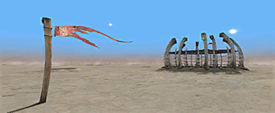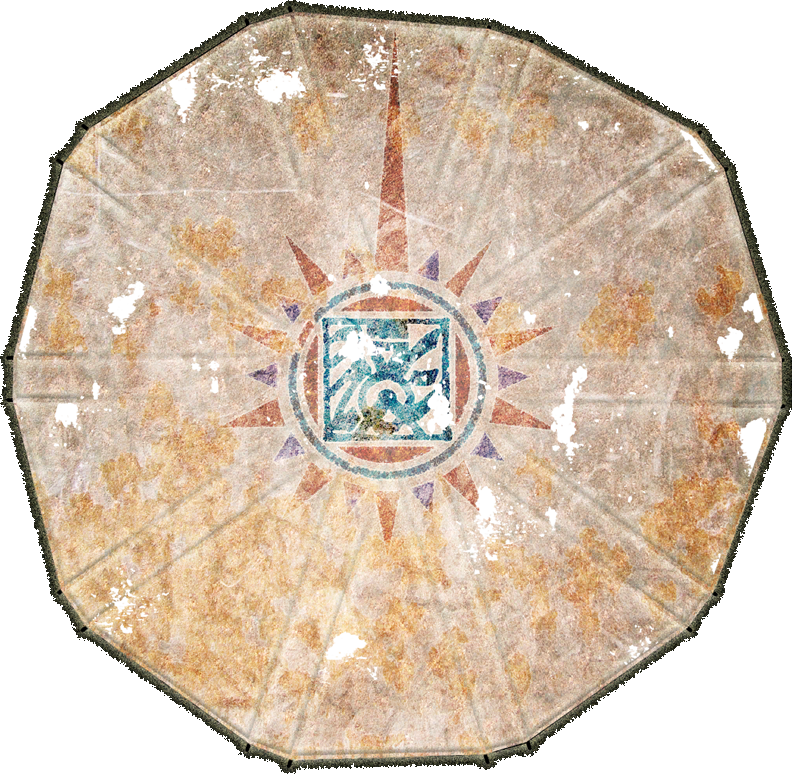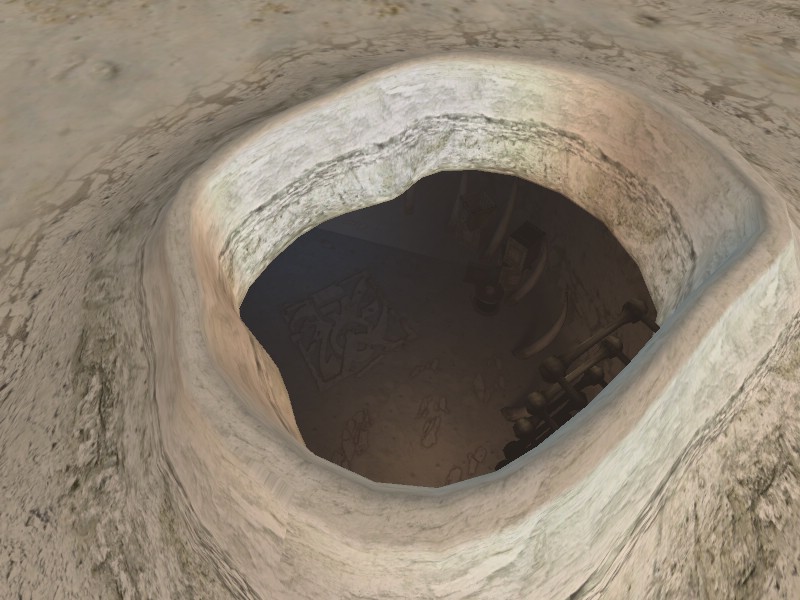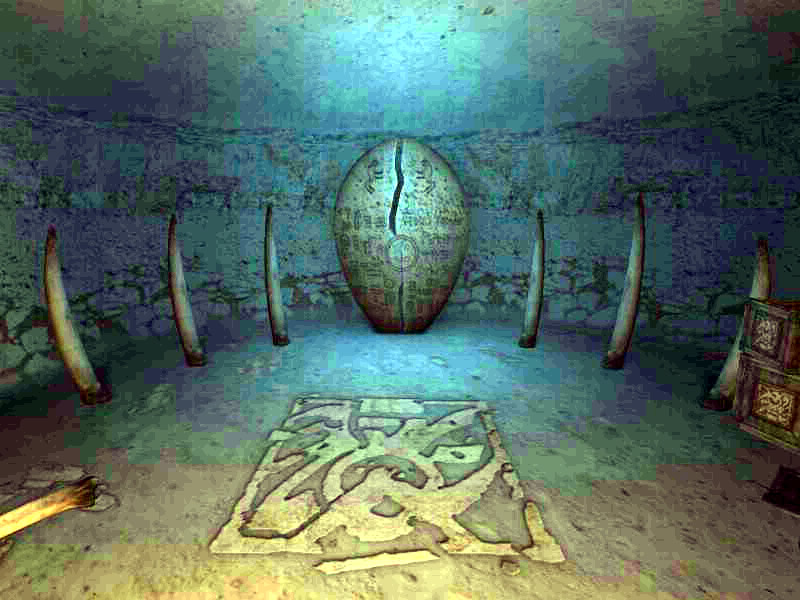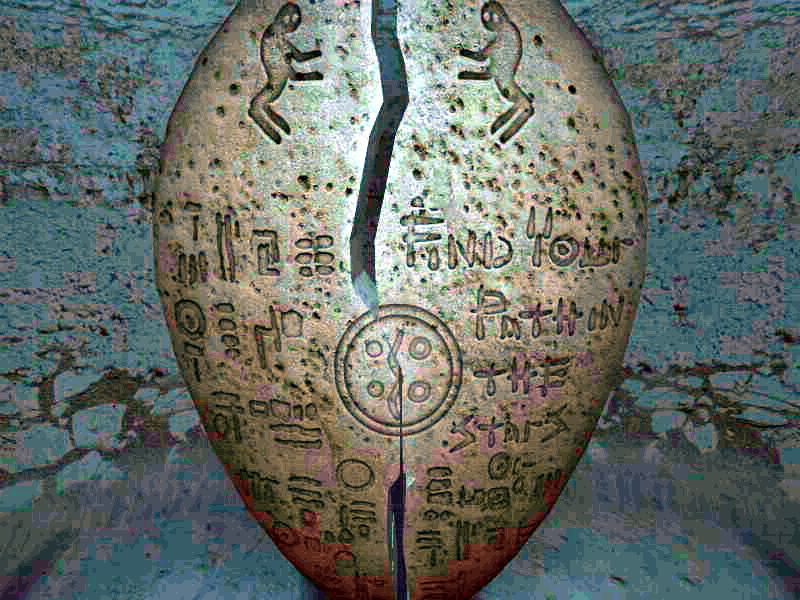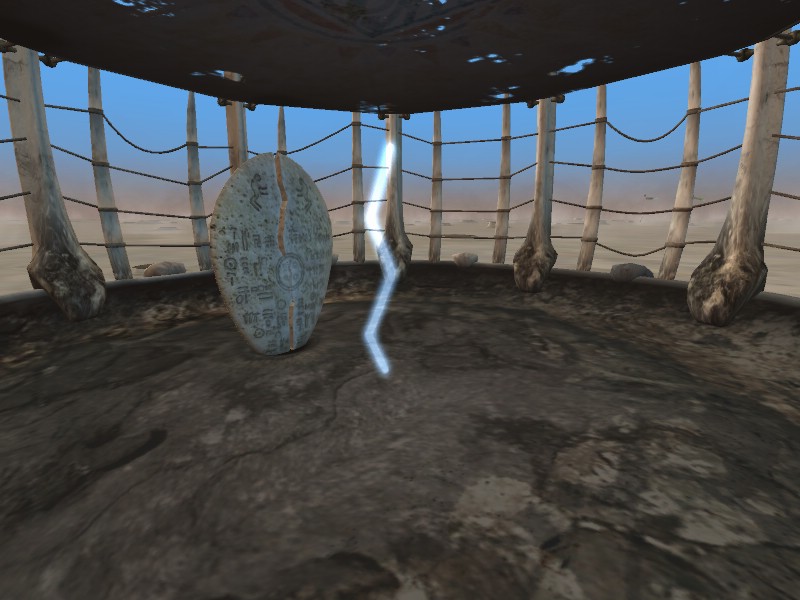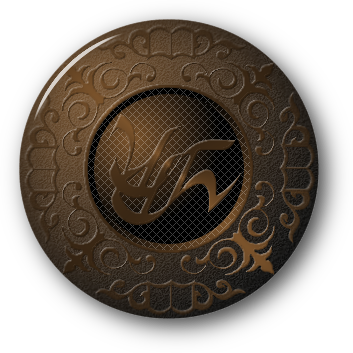

|
|
Minkata was an Age written for the Guild of Surveyors. The name is taken from a D'ni phrase that means "heavily scarred", a reference to the mineral stumps to be found scattered everywhere across the landscape.
The Surveyors used the Age as a training ground in navigation by dead reckoning. The trainee was given a set of coordinates to follow to get to each of a set of five caves, and had to determine direction by shadows cast by the suns, and distance by travel time. The planetary system Minkata is part of has a trinary star arrangement, so the planet has three suns. To help the trainee orient himself, they stretched a tarpaulin across the roof of a cage and painted a compass rose on it, oriented to magnetic north. The symbol in the center of the rose is the Surveyors Guild insignia.
Explorers have come to call the caves that are the endpoints for the navigation puzzles "kivas", after the ceremonial pit rooms dug by American Southwest Indians such as the Hopi. The kivas are dug into miniral stumps, and are not covered. During the day, this means the sand blown about by the constant winds drifts in and makes visibility poor. The kivas seem to date back to the time of the D'ni, but were altered by the Bahro for one of Yeesha's quests. It is unknown what the quest is intended to accomplish.
This is the inside of kiva number one. The visibility is normally very poor due to the grit and dust in the air, so I've color-enhanced this picture so that you can see detail. The Surveyors' inisignia can be seen on both the floor and the wooden crates, which is evidence to support the theory that the kivas were there during the time of the D'ni. The bone decorations and ladders as well as the cracked oval stone near the wall were placed in each kiva by Yeesha's Bahro. The Bahro markings on the stone are the same type found on the exterior of Esher's laboratory in Noloben. They are part of the Bahro writing system that they used in their version of creating links, rather than the pictographs found elsewhere. Yeesha had words in English carved into it as well, to provide a clue to what she wanted explorers to do. There is a possible reason for all six stones having an identical appearance. I believe that there is really only one stone, and we are seeing it in all five kivas as well as the central cage. This theory arises from the fact that the Bahro did the same thing when they created the keeps for the stone tablet that bound them to D'ni, which Dr. Watson experienced in his quest to gain control of it. The stone is a linking device used for two purposes; it links an explorer or explorers through time, and creates a portal next to the stone in the cage. In that respect, it's similar to the Journey Cloths found in other Ages. For that reason, I believe that these stones are showing us the Bahro version of the Great Words used in writing a linking book, which are normally hidden inside the weave of the cloth panels they use for Journey Cloths and Bahro Stones.
When Yeesha decided to make Minkata the site of one of her quests, she took things a step further than the D'ni could. The Bahro stones she set up link forward through time to a future version of Minkata when night has fallen. She also rewrote the orienteering courses they used so that they matched certain constellations in the night sky. She then assigned Bahro to monitor the Age and perform a specific task whenever people were present. We can be reasonably confidant that it is a distant future because of the deterioration of the central cage structure.
If both the day and night portions of a leg of her quest were followed correctly, the explorer was able to add a segment to a Bahro glyph portal inside the cage. As usual, once the glyph portal was complete, it linked the explorer to an instance of the Bahro cave in Rudenna where they could collect a ring for the well in their Relto. As usual, she was not forthcoming with information about why she wanted people to do this.
A theory regarding the planetary system Minkata is obviously not an alternate version of the Earth, as many Ages are. This is easy to see at both at night (when the sky is easy to see and there are no recognizable constellations. In addition, there are two spiral galaxies that take up a significant portion of the sky) and during the day (the trinary star system is a pretty hard clue to miss!). There have been proponents among the community of explorers who have put forth the idea that Minkata is actually the star system of Mintaka. Mintaka is a star system that is also known as Delta Orionis. The name Mintaka comes from منطقة (manṭaqa), an Arabic word that means "the belt". Together with Alnitak (Zeta Orionis) and Alnilam (Epsilon Orionis) Mintaka forms the belt of the constellation of Orion. Mintaka is a trinary star system like that above Minkata, which is one of the facts which, other than the two names sounding similar, caused the idea to be proposed. However, there are two main facts that disqualify it. The stars of Mintaka orbit each other every 5.73 days, so if they were above Minkata, there would be significant changes in their relative positions that could be observed by anyone visiting the Age for any length of time. Secondly, the system is about 690 light years from Earth, meaning that in galactic terms, there is very little difference in the view of distant celestial objects from there and from the Earth. In other words, other galaxies are really no closer to Mintaka than they are to us, so the large pair of galaxies visible in Minkata's night sky are impossible if one were on a planet near Mintaka. The fact that both during the night and day, there is no perceptable movement of the visible celestial bodies leads me to guess that it's because the planet of Minkata is in a very slow orbit, and probably has a very slow rotation around its own axis. The fact that there is eventually a night tells me that it isn't locked so that the same side of the planet always faces the suns. The suns must orbit around a common center of gravity at the same rate Minkata orbits them, and Minkata must rotate once per orbital year. That would mean that it always points toward the same constellations, and would also explain why the suns would not change their reltative positions in its sky during the day. If my theory is correct, it would mean that Minkata does have a day, sunset, night, and sunrise. It's just that it might have such a long orbit that it could take hundreds of years for it to cycle. That would explain why the suns never seem to move when we visit it. The are, but at a rate so slow that we cannot measure it over the period of time we've been able to access the Age. |
Myst, the Myst logo, and all games and books in the Myst series are registered trademarks and copyrights of Cyan Worlds, Inc. Myst Online: Uru Live is the sole property of Cyan Worlds Inc. The concepts, settings, characters, art, and situations of the Myst series of games and books are copyright Cyan Worlds, Inc. with all rights reserved. I make no claims to any such rights or to the intellectual properties of Cyan Worlds; nor do I intend to profit financially from their work. This web site is a fan work, and is meant solely for the amusement of myself and other fans of the Myst series of games and books. |
